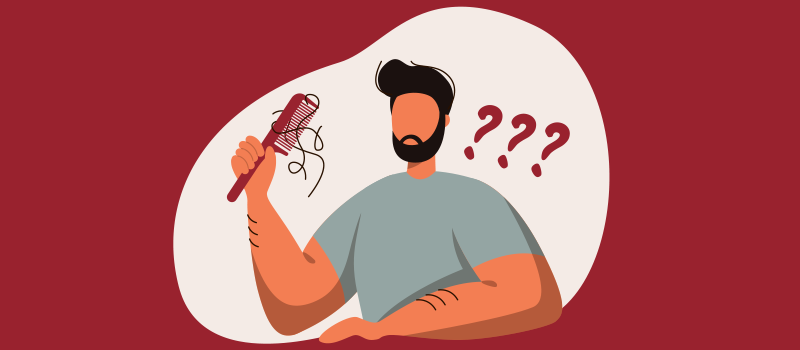10 Duchenne Muscular Dystrophy Symptoms

Duchenne muscular dystrophy (DMD) is a genetic disease with progressive muscle weakness due to a mutation in certain genes that code for a protein called dystrophin. DMD occurs at a rate of 1 in every 3,300 boys. Please continue reading to learn more about this condition, including the symptoms in affected children, treatment options, and life expectancy.
Why is Duchenne muscular dystrophy common in males?
According to the Rare Diseases Information Center, Duchenne muscular dystrophy has an X-linked recessive inheritance pattern. It mainly affects boys and is very rare in girls. This is because males have only one X chromosome (XY), which they get from their mothers. If this X chromosome has a gene mutation in the dystrophin protein, the boy develops symptoms of Duchenne muscular dystrophy, such as muscle atrophy (muscle wasting) and muscle weakness.
Females, on the other hand, receive two sex chromosomes (two X chromosomes), one from each parent. So, even if one X chromosome has an altered gene (pathogenic variant), the other X chromosome has the correct DMD gene and can make enough dystrophin protein to prevent symptoms of DMD.
Females with one altered dystrophin gene are called carriers. Carriers may never find out about their genetic mutation (a change in the responsible gene), unless there is a family history of Duchenne muscular dystrophy (DMD).
Males inherit DMD from their mothers, who are carriers of this pathogenic genetic variant. Genetic counseling can help families of carriers understand the risks.
What conditions are similar to DMD?
Other muscular dystrophies, such as Becker muscular dystrophy (a mild form of Duchenne muscular dystrophy), an intermediate form between DMD and Becker muscular dystrophy, and DMD-associated dilated cardiomyopathy (heart muscle disease with no involvement of the skeletal muscles) are genetic conditions that belong to the same group of rare diseases.
When do the first symptoms of Duchenne muscular dystrophy appear?
The first symptoms of Duchenne muscular dystrophy typically appear in early childhood, usually between the ages of 2 and 3 years in boys.
What are the symptoms of Duchenne muscular dystrophy?
The main symptom of Duchenne muscular dystrophy is progressive muscle weakness.
The disease affects both the skeletal and heart muscle. The proximal muscles (muscle fibers close to the trunk or core) are the first to be affected. Later, the distal muscles (muscle tissue in the extremities) also become involved. Muscle cells in the lower extremities (thighs and calves) are usually affected before the upper extremities (upper arms and shoulder muscles). Respiratory and heart muscle involvement occurs in the late stages of DMD.
Signs and symptoms in a boy with Duchenne muscular dystrophy (DMD) may include:
- Late walker
- Difficulty walking, running, jumping, climbing stairs, and getting up from the floor due to muscle weakness
- Clumsiness and frequent falls
- Enlarged calf muscles
- Waddling gait
- Muscle pain and stiffness
- Short stature
- Lumbar lordosis (inward curvature of the spine)
- Learning disabilities, intellectual impairment, cognitive impairment, and/or delayed speech
- Involvement of the heart and respiratory muscles in the later stages
Duchenne muscular dystrophy does not affect nerve impulses (touch, smell, taste, hearing, eyesight). It also does not affect other muscles (smooth or involuntary muscles) that control the bladder and bowel, and it does not affect sexual function.
How quickly does Duchenne muscular dystrophy (DMD) progress?
Duchenne muscular dystrophy progresses at different rates in different people. Even brothers with the same mutation can have a variable course and progression of symptoms. Regular visits with the primary healthcare provider and neuromuscular team are necessary throughout life to monitor the disease and treat the symptoms as they arise.
What are the 4 stages of Duchenne muscular dystrophy?
As mentioned, Duchenne muscular dystrophy (DMD) is usually diagnosed during infancy (if there is a family history) or early childhood. A diagnosis can be made based on genetic testing and clinical testing with enzyme tests (creatine kinase), muscle biopsy, electromyography, and heart and lung function tests. The condition can be broadly divided into four stages with symptoms as follows:
Early ambulatory stage
This stage occurs during early childhood. There may be no symptoms or initial findings, such as difficulty keeping up with peers while running and climbing stairs. The child may complain of achy muscles. There may be delays in achieving developmental milestones, enlarged calf muscles, and Gower’s maneuver (needing help getting up from the floor) because the affected child has decreased muscle strength in the lower extremities.
A diagnosis of Duchenne muscular dystrophy can be made with a confirmed mutation on genetic testing. Treatment at this stage consists of physical therapy to allow the child to be safely active and a healthy diet that is high in calcium and vitamin D. A team of healthcare providers, including neuromuscular specialists, usually manage DMD cases.
Late ambulatory stage
This stage usually occurs during late childhood, adolescence, or early adulthood. It is characterized by an inability to walk long distances and the need for a mobility device such as a scooter or manual wheelchair. A learning disability, such as delayed speech, may become evident in older children.
Care during this stage of Duchenne muscular dystrophy typically consists of optimizing bone health, monitoring breathing and heart function, and treating other symptoms as they appear.
Early non-ambulatory stage
This stage of Duchenne muscular dystrophy is typically present during adolescence or young adulthood. The use of a motorized wheelchair becomes necessary at this stage due to progressive muscle weakness. Doctors manage symptoms as they arise and monitor heart and lung function.
Late non-ambulatory stage
This stage is usually present during adulthood. There is progressive muscle weakness, including involvement of the respiratory and heart muscle. Medical providers continue to monitor breathing and heart function, swallowing, bone health, and digestive and urinary function.
What are the treatments for Duchenne muscular dystrophy?
There is no cure for Duchenne muscular dystrophy. However, healthcare providers can treat DMD to manage symptoms and slow the progression of the disease.
Medications
Doctors may prescribe corticosteroids such as prednisone to delay the progression of muscle atrophy. However, prolonged use of steroids can lead to weak bones and increased fracture risk.
Heart medications, such as beta blockers or angiotensin-converting enzyme (ACE) inhibitors, may be prescribed if the condition affects the heart muscle.
Weak respiratory muscles can lead to difficulty coughing, increasing the risk of respiratory infections. Vaccinations are, therefore, important in DMD patients.
Newer drugs such as eteplirsen (Exondys 51) and golodirsen (Vyondys 53) have been approved by the U.S. Food and Drug Administration to treat some people with Duchenne dystrophy.
Gene therapy
The U.S. Food and Drug Administration has approved Elevidys after accelerated clinical trials. This is the first treatment that addresses the genetic cause and not only the symptoms of Duchenne muscular dystrophy. It is for boys aged 4-5 years who have a confirmed mutation in the DMD gene and no other pre-existing medical condition that prevents the use of this treatment. Elevidys is given as a single intravenous dose and delivers a gene to the body that produces a micro-dystrophin, a shortened form of the dystrophin protein found in normal muscle cells.
Therapy
Physical and occupational therapy are critical for people with Duchenne muscular dystrophy. These include stretching and range of motion exercises to maintain flexibility and prevent contractures as well as low-impact aerobic exercises like walking and swimming for overall health. Mobility aids (canes, walkers, wheelchairs) and assistive devices such as braces can improve the quality of life of DMD patients. As the disease progresses, DMD patients may need breathing assistance with CPAP machines and, ultimately, require ventilator-assisted breathing.
Surgery
Surgical treatment is sometimes required in Duchenne muscular dystrophy patients to correct spinal curvatures or contractures that are affecting breathing. Surgical placement of cardiac devices such as a pacemaker may also be needed to improve heart function.
What is the life expectancy for Duchenne muscular dystrophy?
Patients with Duchenne muscular dystrophy rarely survive beyond their 30s. Most patients with this genetic disorder die in their late teens or 20s due to respiratory failure and/or cardiomyopathy.
References:
- https://www.mda.org/disease/duchenne-muscular-dystrophy
- https://www.genome.gov/Genetic-Disorders/Duchenne-Muscular-Dystrophy#:
- https://www.mda.org/disease/duchenne-muscular-dystrophy/signs-and-symptoms
- https://www.parentprojectmd.org/about-duchenne/what-is-duchenne/progression/
- https://www.mayoclinic.org/diseases-conditions/muscular-dystrophy/diagnosis-treatment/drc-20375394
- https://www.fda.gov/news-events/press-announcements/fda-approves-first-gene-therapy-treatment-certain-patients-duchenne-muscular-dystrophy












SOCIAL